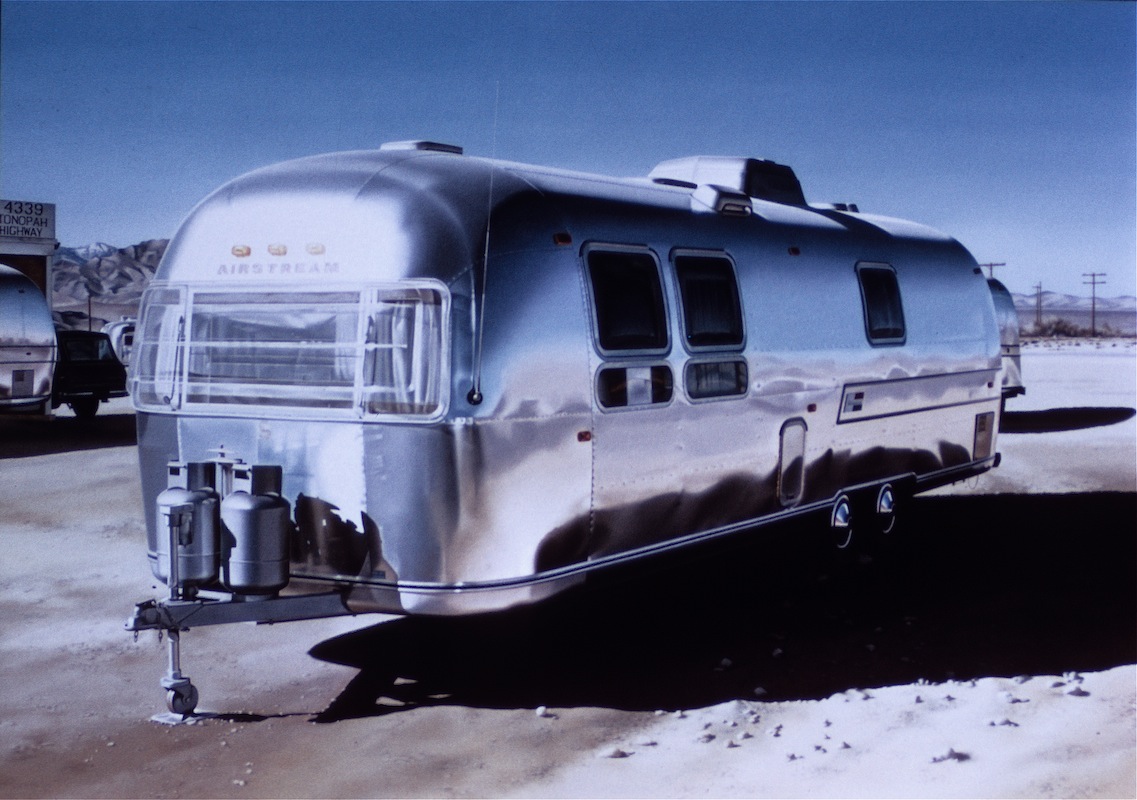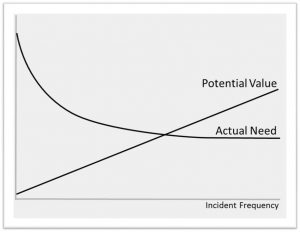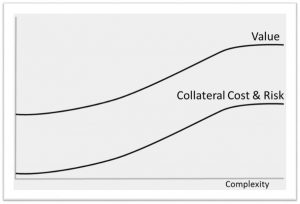
Gauging Value in AR Service Applications
You know I have been very vocal in criticizing augmented reality (AR) applications that, in my opinion, demonstrated too little business value. You have heard (or read) me referring these as righty-tighty lefty-loosey systems.
From time to time, clients and attendees of my public lectures challenge me for guidelines to help them gauge the potential business value of AR applications. If a simple air filter replacement procedure isn’t useful, then what is?
Focus on Knowledge Gaps
The goal of a self-service AR-guided service support system is to reduce equipment downtime, avoid unnecessary service trips, and improve equipment utilization and overall customer satisfaction.
It’s reasonable to assume that the value delivered by a self-service application is more pronounced when supporting routine tasks that occur in high frequency, such as checking fluid levels, replenishing consumables, and replacing filters. For issues that occur infrequently, the investment in instrumenting and connecting a piece of equipment to the Internet of Things (IoT) network, and developing the augmented reality application can be more difficult to justify.
However, the more frequent the incidents, the less need there is for the AR application. Initially, the system will provide valuable guidance, but after a few times, the user will memorize the procedure’s steps, and eventually will have no need for the system.
 Stated differently, the value, as expressed in terms of cost avoidance and cumulative cost savings, is greater for frequent maintenance and service incidents. However, as depicted in the chart on the right, the higher the frequency of service events, the less need for it there is. (This chart, as well the chart below, is a conceptual depiction of this general behavior and is not a precise quantitative model.)
Stated differently, the value, as expressed in terms of cost avoidance and cumulative cost savings, is greater for frequent maintenance and service incidents. However, as depicted in the chart on the right, the higher the frequency of service events, the less need for it there is. (This chart, as well the chart below, is a conceptual depiction of this general behavior and is not a precise quantitative model.)
An augmented reality-based support system, and, in fact, any knowledge-centered application, should focus on addressing knowledge gaps: areas in which where there is a persistent and significant gap between the task-knowledge of the users and the actual knowledge required to perform the task. And, as noted above, how easily can this gap be closed, through self-learning (or training), rendering the system less relevant.
Consider Complexity and Collateral Cost
It goes without saying that the more complex the task the user needs to perform, the greater the potential value of the AR support system.
 However, when considering the more intricate tasks, especially when performed less frequently, we must also recognize additional facets of the maintenance and repair process that a linear procedural guidance, even if delivered through an AR layer may easily miss: Is there a possibility that the less experienced user (the ideal audience for AR applications) will somehow damage the equipment? How likely is he to miss other problems that an experienced tech will notice even if the guided procedure doses not call them out specifically? Is there a risk of personal injury? Is there a question of product and personal liability?
However, when considering the more intricate tasks, especially when performed less frequently, we must also recognize additional facets of the maintenance and repair process that a linear procedural guidance, even if delivered through an AR layer may easily miss: Is there a possibility that the less experienced user (the ideal audience for AR applications) will somehow damage the equipment? How likely is he to miss other problems that an experienced tech will notice even if the guided procedure doses not call them out specifically? Is there a risk of personal injury? Is there a question of product and personal liability?
If the response to these concerns is that AR-guided procedures are intended to support relatively simple and safe operations, then we are back to the question of the diminishing long-term value we discussed earlier.
The obvious answer is to target procedures that aren’t routine or trivial, yet can be performed completely, reliably, and safely within the AR application. Alternatively, consider using the application only as a starting point, and provide a robust mechanism to escalate the problem to the next level, in which a remote expert technician can use augmented reality technology to guide the technician on site.
Training: A Missed Opportunity?
The pressure to improve efficiency and productivity utilizing advanced technologies and process automation to is on the rise, and with it a growing demand for maintenance and service personnel. Most equipment is becoming more complex and, at the same time, more reliable, which means that field service technicians have less hands-on experience repairing it. Add to this the persistent egress of experienced technicians from workforce, and you can see why technology-guided service support is extremely important.
Traditionally, service organizations focused on improving field maintenance and repair operations, because, to quote Willie Sutton, that’s where the money is: repair cost, warranty claims, spare parts inventories, service contracts, and so forth.
But given the growing scarcity of qualified and experienced workforce, both product and service organizations will be wise to pay as much attention to operator and service personnel training, in which AR can be an invaluable tool, both as a formal training tool and a just-in-time refresher before attempting a complex repair task.
Image: Airstream (Ralph Goings, 1970)
